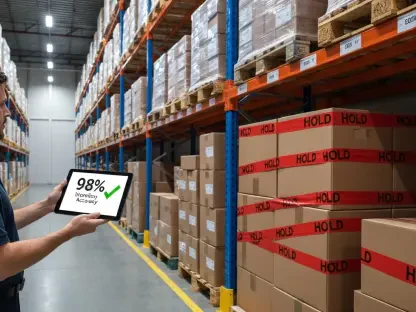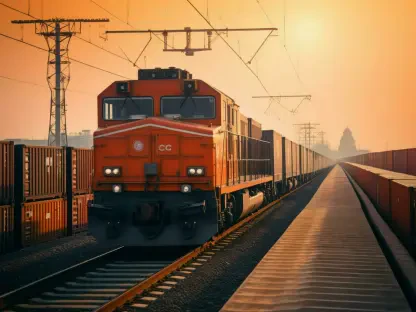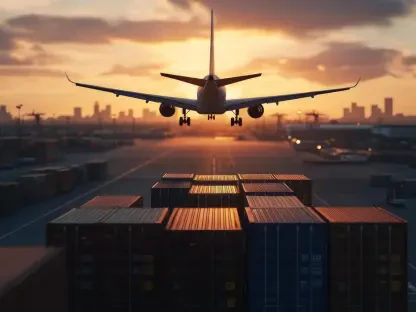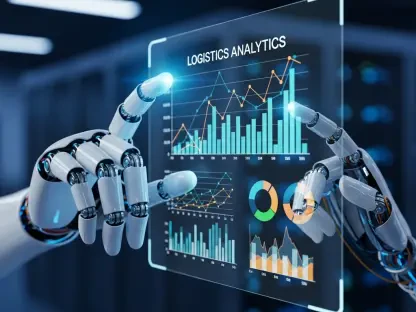Introduction and Context for the Review
Imagine a bustling urban center where drones zip through the sky, ground bots weave through pedestrian traffic, and self-driving vans glide silently to doorsteps, delivering packages within hours of an order being placed. This is no longer a distant dream but a reality shaped by artificial intelligence (AI) in last mile delivery—the critical final step of the logistics chain. With e-commerce continuing to surge, the pressure to optimize this phase has never been greater, as it often accounts for the highest costs and complexities in supply chains. AI has emerged as a game-changer, powering autonomous systems to tackle urban congestion, labor shortages, and customer expectations for speed. This review delves into how AI is transforming last mile delivery through drones, bots, and vans, evaluating its core technologies, real-world impact, and the hurdles yet to be overcome. The aim is to provide a comprehensive look at AI’s role in redefining logistics efficiency in a market hungry for innovation.
The Emergence of AI in Last Mile Delivery
AI has rapidly evolved from a novel concept to a cornerstone of autonomous last mile delivery, addressing the growing demands of a digital economy. Initially tested in controlled settings, AI now underpins scalable solutions that enable delivery systems to function without human intervention. Its integration marks a response to the exponential rise in online shopping, where same-day or even same-hour delivery has become a competitive benchmark for retailers.
The relevance of AI in this space is amplified by challenges like urban gridlock and rising operational costs. By leveraging advanced algorithms, autonomous systems can navigate dense environments and adapt to real-time changes, offering a lifeline to logistics providers struggling with traditional methods. This shift highlights AI’s potential to not only streamline operations but also reshape how goods reach consumers in crowded cities.
Core AI Technologies Powering Autonomous Delivery
Perception and Navigation Systems
At the heart of autonomous delivery lies AI’s ability to perceive and navigate unpredictable urban landscapes. Technologies such as computer vision and sensor fusion allow drones and bots to interpret their surroundings, identifying obstacles like pedestrians or vehicles with precision. These systems are crucial for ensuring safety and enabling operations beyond visual line of sight, a key requirement for scaling delivery networks.
Real-time decision-making is another critical feature, as AI processes data from cameras, lidar, and other sensors to react instantly to dynamic conditions. For instance, a drone might adjust its flight path to avoid a sudden gust of wind, or a ground bot might reroute around a blocked sidewalk. This adaptability is essential for maintaining reliability in complex environments where human oversight is minimal.
The significance of these technologies extends to regulatory compliance, as robust perception systems provide the data needed to prove safety standards are met. Without such capabilities, gaining approval for widespread autonomous operations would remain a distant goal, underscoring AI’s foundational role in this domain.
Route Optimization and Fleet Management
AI’s impact on operational efficiency shines through in route optimization and fleet management, where algorithms analyze a multitude of factors to streamline deliveries. By considering variables like traffic patterns, delivery windows, and energy constraints, machine learning models create the most cost-effective paths for each vehicle or drone. This reduces idle time and fuel consumption, directly cutting expenses for logistics firms.
Dynamic rerouting further enhances flexibility, allowing systems to adapt to unexpected delays or order changes on the fly. For example, if a customer updates their delivery location, AI can recalibrate the route instantly, ensuring minimal disruption. Such responsiveness is a stark contrast to static planning methods that often lead to missed deadlines.
Fleet dispatching, another AI-driven process, maximizes asset utilization by assigning tasks based on proximity, capacity, and priority. This ensures that no vehicle sits unused while demand peaks, ultimately speeding up delivery cycles. Together, these advancements demonstrate how AI turns logistical chaos into orchestrated precision.
Recent Innovations and Market Trends
The landscape of AI in last mile delivery is witnessing remarkable progress, with implementations moving beyond small-scale trials to city-wide deployments. Companies are increasingly adopting hybrid architectures that blend edge computing for immediate tasks with cloud processing for deeper analytics. This balance allows autonomous systems to make split-second decisions while benefiting from broader data insights.
A notable trend is the growing dependence on AI to counter labor shortages, as automation fills gaps left by a shrinking workforce. With the market for autonomous delivery projected to reach USD 4.2 billion by 2030, starting from a strong base in 2025, investment in AI is accelerating to meet consumer demand for rapid service. This growth reflects confidence in technology as a solution to systemic challenges.
Emerging innovations also include the use of AI for predictive maintenance, where data analysis anticipates equipment failures before they occur, minimizing downtime. Additionally, partnerships between tech firms and city planners are fostering test zones for autonomous delivery, paving the way for broader adoption. These developments signal a maturing industry ready to scale.
Real-World Applications and Use Cases
AI’s practical impact on last mile delivery spans diverse sectors, showcasing its versatility in solving unique problems. In urban quick-commerce, for instance, AI coordinates fleets of drones and bots to achieve under-one-hour deliveries, meeting the urgent needs of city dwellers for groceries or essentials. This capability has become a differentiator for retailers in competitive markets.
In healthcare logistics, autonomous systems powered by AI ensure timely delivery of critical supplies, such as medications or blood samples, to remote or underserved areas. Drones equipped with AI navigation can bypass road infrastructure limitations, reaching patients faster than traditional methods. This application highlights technology’s potential to save lives beyond mere convenience.
Another compelling use case is nighttime delivery, where AI enables operations during off-peak hours to avoid daytime congestion. By scheduling deliveries when streets are quieter, logistics providers reduce delays and energy use, while customers benefit from flexible receiving windows. These examples illustrate AI’s capacity to adapt delivery models to specific needs and constraints.
Challenges and Barriers to Adoption
Despite its promise, AI in autonomous last mile delivery faces significant obstacles that temper its rollout. Data quality remains a persistent issue, as models trained on limited or biased datasets struggle to handle real-world variability. Continuous updates and diverse training inputs are necessary to bridge this gap, but they require substantial resources.
Safety certification and privacy concerns add further complexity, particularly with vision-based sensors that capture detailed environmental data. Public unease about surveillance, coupled with cybersecurity risks like adversarial attacks on AI systems, demands rigorous safeguards. Secure engineering practices are being developed, yet gaps in trust and regulation persist as barriers.
Edge computing limitations also hinder progress, as lightweight devices like drones lack the processing power for complex AI models. Latency and energy constraints exacerbate this challenge, pushing the industry toward hybrid solutions that offload intensive tasks to the cloud. Overcoming these hurdles will require collaborative innovation and sustained investment to ensure safe, scalable deployment.
Future Outlook for AI in Last Mile Delivery
Looking ahead, AI’s trajectory in last mile delivery points to transformative breakthroughs that could redefine urban logistics. Fully integrated air-ground traffic management systems are on the horizon, promising seamless coordination between drones, bots, and vans across sprawling city networks. Such infrastructure would unlock unprecedented efficiency in package movement.
Phased adoption roadmaps offer a practical vision, starting with controlled environments like university campuses before expanding to mixed fleets in urban zones. Over time, the goal is to achieve city-wide autonomous networks that operate with minimal human input. This gradual approach allows for iterative improvements and regulatory alignment.
The long-term impact of AI extends beyond logistics to urban planning, as delivery systems influence traffic patterns and infrastructure needs. Cities may need to adapt by designating drone corridors or bot-friendly pathways, integrating autonomous delivery into the fabric of daily life. This evolution suggests a future where AI not only solves logistical puzzles but also shapes how societies function.
Conclusion and Key Takeaways
Reflecting on the exploration of AI in last mile delivery, it becomes evident that this technology has already carved a significant niche in enhancing safety, efficiency, and customer satisfaction within logistics. Its ability to power autonomous systems through complex urban challenges stands out as a remarkable achievement. For stakeholders, the next steps involve prioritizing investments in hybrid AI architectures to balance real-time processing with strategic oversight. Collaborative efforts among logistics providers, manufacturers, and regulators prove essential in addressing data quality and privacy concerns through shared standards and testing initiatives. Moving forward, a focus on scalable pilot programs offers a pathway to refine technologies before full deployment, ensuring that the promise of autonomous delivery transitions smoothly into widespread reality.









